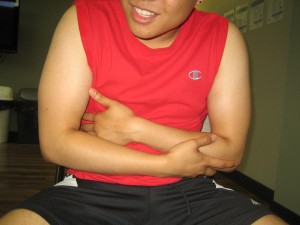Accidental soap poisoning can occur through exposure with household cleaning products that contain harsh chemicals such as simple soap and even benzalkonium chloride. Once these products are ingested or inhaled, they are highly toxic and can be life-threatening.
If you suspect that an individual has been exposed to harmful chemicals, call for emergency assistance or the poison control center as soon as possible. By enrolling in a class on first aid, you know the steps to perform in case of poisoning.
Causes of accidental soap poisoning
An individual can be poisoned by soap or household cleaning products once they are exposed for an extended period. Oftentimes, many do not even understand the strength of the products that they are using. The windows are not opened for ventilation since they do not realize that they are breathing in chemical fumes while cleaning.
Children can unintentionally poison themselves if left unattended and can inhale or ingest the soap products.
What are the risk factors?

In most cases, adults can suffer from accidental poisoning when cleaning at work or at home. Remember that poisoning can transpire if the instructions on how to use the product was not observed while cleaning.
Nevertheless, children face a higher risk for accidental soap poisoning from cleaning products since they are likely to eat or drink them without realizing that they are toxic.
Symptoms of accidental soap poisoning
The symptoms of soap poisoning tend to depend on how the individual was poisoned and the length of contact with the soap product. In case the soap or detergent came in contact with the skin, irritation or burns on the skin layer can occur.
In case the fumes were inhaled, the individual might experience difficulty breathing or swelling in the throat. Take note that this is serious since difficulty in breathing or swallowing can be life-threatening.
If the soap product came in contact with the throat or eyes, other potential complications can occur. When the eyes are exposed, there is vision loss or difficulty in focusing since the chemicals can burn the eyes. When swallowed, there is swelling or pain in the throat as well as the tongue and lips.
Once an individual has been poisoned, he/she will have low blood pressure and there is an abrupt drop in the heart rate. In serious cases, the heart can collapse. When blood tests are taken, it reveals that the acid level of the body has changed which damages the vital organs. This does not always happen with household soap products but can occur from poisoning due to commercial cleaning products.
The gastrointestinal tract must also be observed if soap product was ingested. The individual will start to vomit repeatedly and might even vomit blood. This can be accompanied by abdominal pain or blood in the stool.
How to manage accidental soap poisoning
The management of accidental soap poisoning will vary depending on how the individual was exposed. In most cases, the doctor will assess the vital signs. The treatment for soap poisoning includes the following:
- Administration of oxygen
- Pain medications
- IV fluids
- Breathing tube
- Removal of burned skin
- Skin irrigation
- Endoscopy
- Bronchoscopy
Always remember that poisoning is life-threatening and the individual should seek immediate treatment to prevent complications such as tissue death and brain damage.
